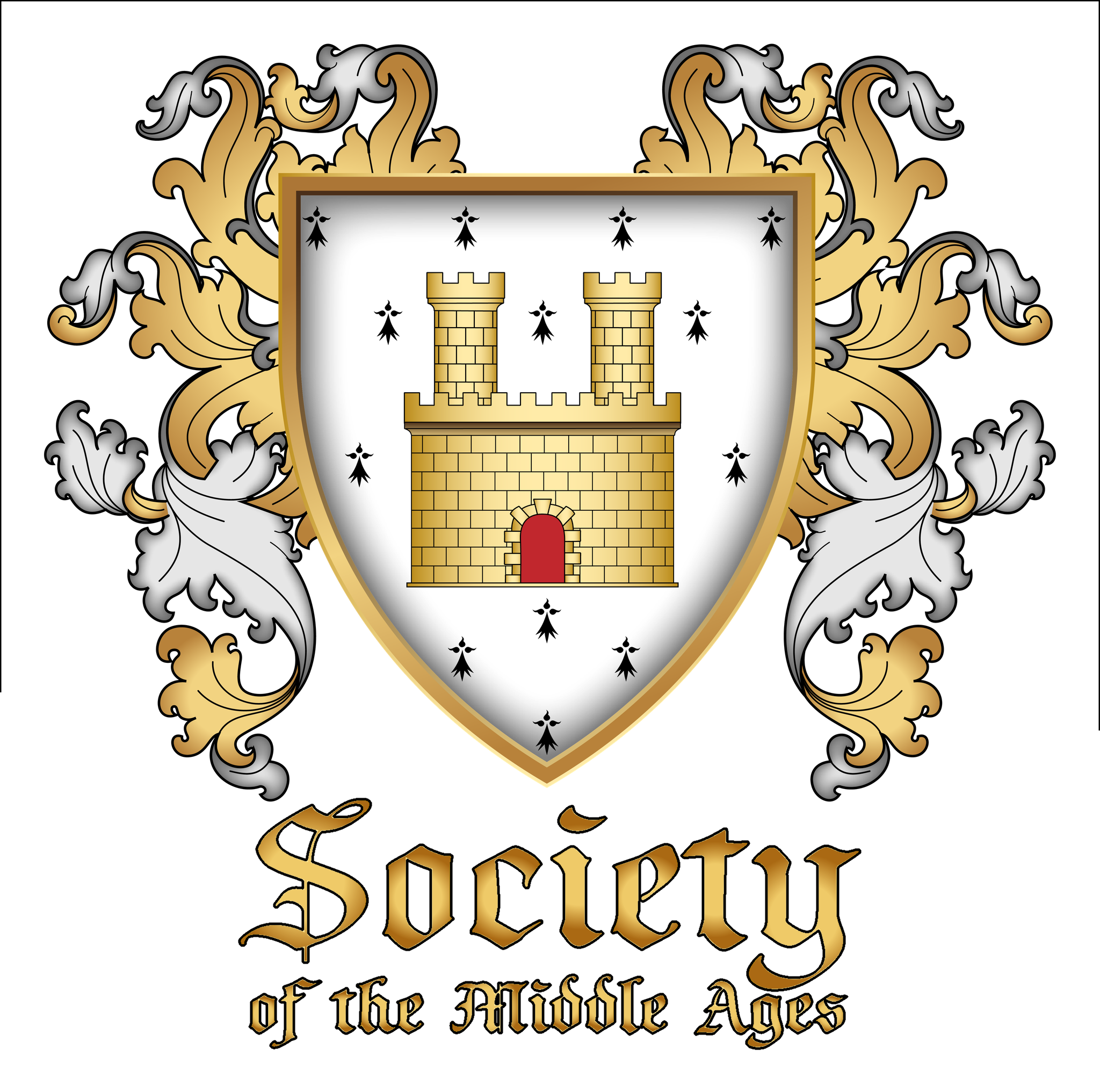Letter of Registrations and Returns
Society of the Middle Ages, Inc.
Office of the Muskatour King of Arms
May 2023
Greetings from the Muskatour staff.
Persona names and personal armoury are an important aspect of the medieval aura that we hope to recreate through our various activities. Taking on these alter egos, we have a chance to remove ourselves from the modern “here and now” and submerge ourselves in another time period and even another culture. The various means by which we display our personal armoury add to the pageantry of every event, covering the modern and mundane in colorful aesthetics of a more elegant age. This is part of the reason for a recent change to Codex Societatis. By consensus of the Board of Directors, effective on the next Coronation Day, the criteria for the orders of knighthood will change slightly. From that point forward, candidates for the rank of knight bachelor will be required to have a persona name and personal arms at least submitted for consideration by the College. Thus, I would encourage any and all of you who have a desire to achieve recognition through the accolade of knighthood to start thinking about submitting names and arms for registration.
We have one precedent from this month’s meeting:
This month, we had a submission in which the central charge was a natural seahorse. Heraldically, a seahorse is a mythical creature having the head and forelegs of a horse and a fish tail. The natural seahorse – the small horse-like creature we see in aquariums – was not a charge used in period armoury. However, the actual fish was known to people throughout medieval Europe. We have examples of Celtic jewelry depicting the natural seahorse as well as artistic evidence in Italy, Greece, and Cyprus. Thus, it is not unreasonable to allow the natural seahorse as a charge in period-style heraldry. To avoid confusion between the mythical seahorse and the natural seahorse, the Muskatour office ruled that the blazon term “seahorse” will always refer to the mythical creature found in period heraldry. The natural seahorse will be blazoned as a hippocampus, since the fish itself if from the genus hippocampi. The default posture for a hippocampus is palewise facing to dexter.
This month we have one return and no pends. See below for the details.
REGISTRATIONS
1. Álendia, Kingdom of – New Award Name, New Award Badge
Acorn Cluster, Award of the
(Fieldless) Two acorns conjoined in chevron Or.
This is an extra-numerary children’s award for members of the Order of the Golden Acorn.
2. Álendia, Kingdom of – New Award Name, New Award Badge
Blossoming Sprig, Award of the
(Fieldless) A sprig of oak slipped, leaved, and fructed argent.
This is an extra-numerary children’s award for members of the Order of the Silver Sapling.
3. Álendia, Kingdom of – New Award Name, New Award Badge
Lion’s Paw, Award of the
(Fieldless) A lion’s jambe bendwise Or banded at the wrist azure.
This is an award given solely at the Queen’s discretion to ladies who have rendered particularly notable service to the Queen personally.
4. Álendia, Kingdom of – New Award Name, New Award Badge
Oak Hurst, Award of the
(Fieldless) A hurst proper.
This is an extra-numerary children’s award for members of the Order of the Golden Oak.
5. David MacPhilip – New Name, New Arms
Quarterly azure and ermine, a sea-wolf Or.
6. Jesse Charron – New Name, New Arms
Quarterly Or and ermine, a hippocampus vert.
The original documentation for the given name was from a reputable source, but only dated to approximately a century outside the SMA time period. Fortunately, the Muskatour staff was able to locate a 15th century printing of a book that included Jesse as a given name. The client should be advised that the documentation for Jesse is limited to identifying it as a male name.
RETURNS
- 1. Saint Lydia of Thyatira, Company of – New Guild Badge
(Fieldless) A skein winder argent.
Note that a skein winder is also known as a yarn swift. While this tool did exist in our period, the style of skein winder submitted does not match any extant example the Muskatour staff could locate. The style shown – a six-armed wheel oriented vertically – dates to the early 18th century. Examples of medieval skein winders the staff was able to locate or document were oriented both vertically and horizontally, but universally had four arms. Additionally, the medieval examples were rarely mounted on a stand of any kind. The submission was previously pended to allow the client to either document the style submitted as a period artifact or to elect to redo the artwork with a previously documented style of the tool. As of the date of the May decision meeting, the staff has not received documentation of the six-armed style in period and had not received word from the guildmaster accepting a change of emblazon to a documented four-armed version. Thus, we have no choice but to return the submission for additional work
PENDED
None
